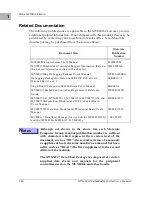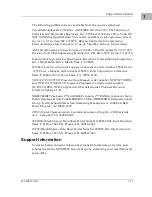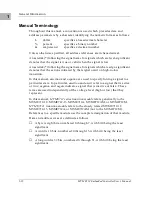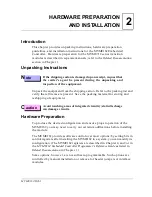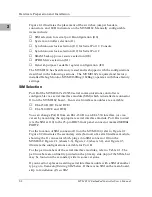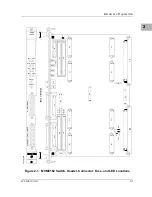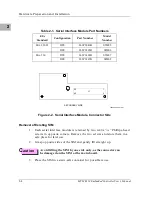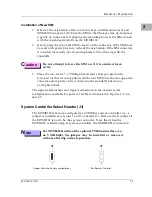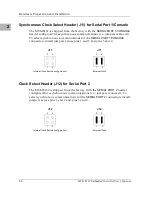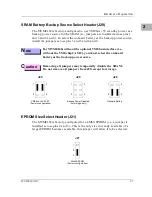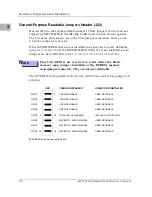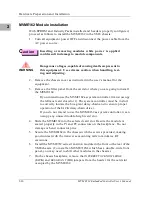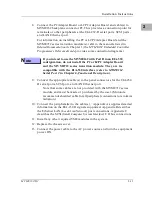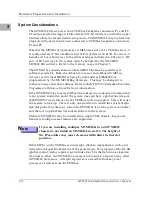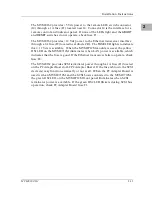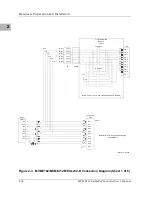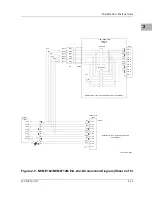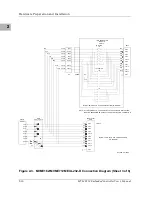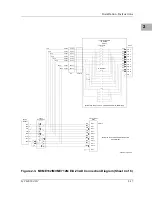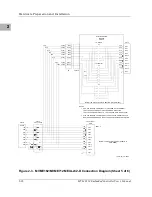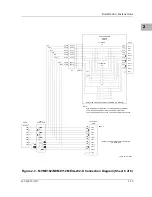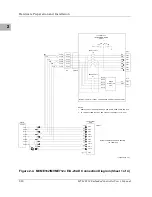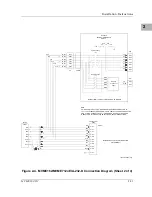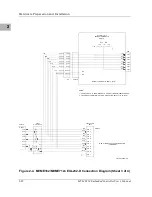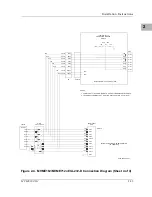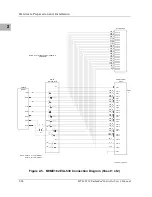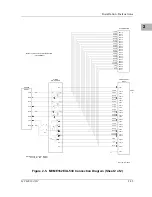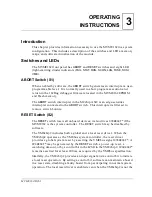
Hardware Preparation and Installation
2-12
MVME162 Embedded Controller User’s Manual
2
System Considerations
The MVME162 draws power from VMEbus backplane connectors P1 and P2.
P2 is also used for the upper 16 bits of data in 32-bit transfers, and for the upper
8 address lines in extended addressing mode. The MVME162 may not function
properly without its main board connected to VMEbus backplane connectors
P1 and P2.
Whether the MVME162 operates as a VMEbus master or as a VMEbus slave, it
is configured for 32 bits of address and 32 bits of data (A32/D32). However, it
handles A16 or A24 devices in the address ranges indicated in Chapter 3. D8
and/or D16 devices in the system must be handled by the MC68040/
MC68LC040 software. Refer to the memory maps in Chapter 3.
The MVME162 contains shared onboard DRAM whose base address is
software-selectable. Both the onboard processor and offboard VMEbus
devices see this local DRAM at base physical address $00000000, as
programmed by the MVME162Bug firmware. This may be changed via
software to any other base address. Refer to the MVME162 Embedded Controller
Programmer’s Reference Guide for more information.
If the MVME162 tries to access offboard resources in a nonexistent location and
is not system controller, and if the system does not have a global bus timeout,
the MVME162 waits forever for the VMEbus cycle to complete. This will cause
the system to lock up. There is only one situation in which the system might
lack this global bus timeout: when the MVME162 is not the system controller
and there is no global bus timeout elsewhere in the system.
Multiple MVME162s may be installed in a single VME chassis. In general,
hardware multiprocessor features are supported.
N
ote
If you are installing multiple MVME162s in an MVME945
chassis, do not install an MVME162 in slot 12. The height of
the IP modules may cause clearance difficulties in that slot
position.
Other MPUs on the VMEbus can interrupt, disable, communicate with, and
determine the operational status of the processor(s). One register of the GCSR
(global control/status register) set includes four bits that function as location
monitors to allow one MVME162 processor to broadcast a signal to any other
MVME162 processors. All eight registers are accessible from any local
processor as well as from the VMEbus.
Summary of Contents for MVME162
Page 1: ...MVME162 Embedded Controller User s Manual MVME162 D2 ...
Page 6: ......
Page 10: ...x ...
Page 12: ...xii ...
Page 14: ...xiv ...
Page 52: ...Hardware Preparation and Installation 2 26 MVME162 Embedded Controller User s Manual 2 ...
Page 64: ...Operating Instructions 3 12 User s Manual 3 This page intentionally left blank ...
Page 78: ...Operating Instructions 3 26 User s Manual 3 ...
Page 92: ...Functional Description 4 14 User s Manual 4 Figure 4 1 MVME162 Main Module Block Diagram ...

